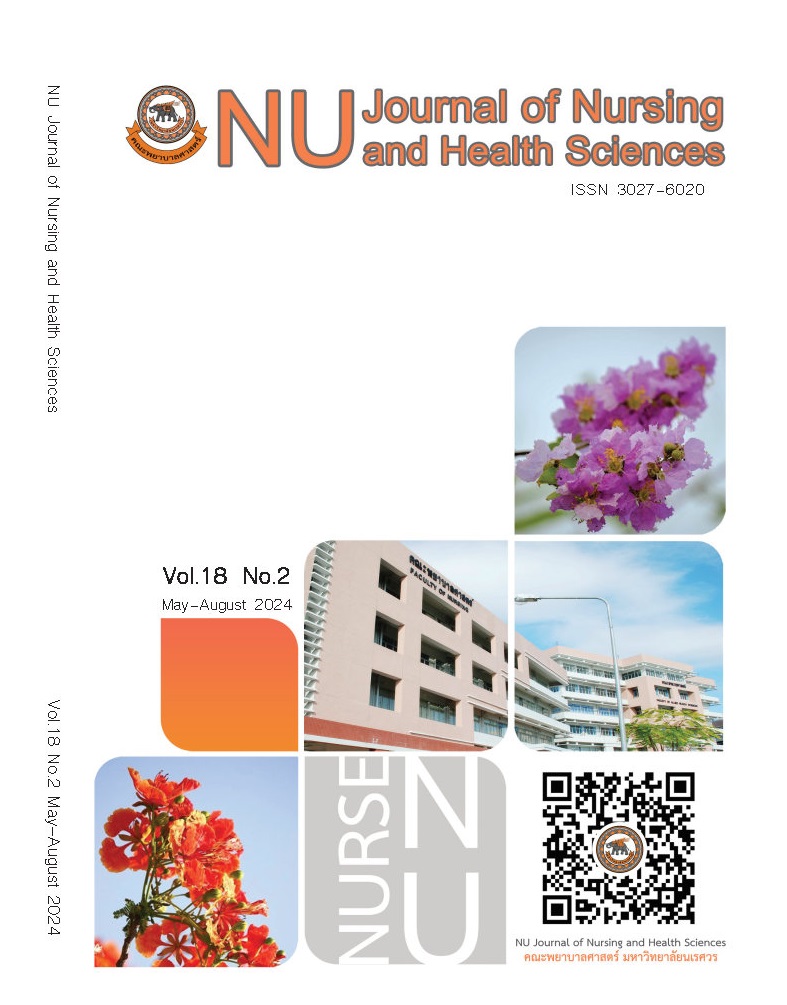Effect of Abdominal Massage on Feeding Intolerance Condition in Preterm Infants
Main Article Content
Abstract
This study was quasi-experimental research, two group pretest-posttest designs. The objective was to compare the effect of abdominal massage on feeding intolerance condition in preterm infants before and after the massage. According to the inclusion criteria: 1) postconceptional ages between 28 and 36 weeks 2) being admitted in the neonatal intensive care unit of Maharaj Nakorn Chiang Mai Hospital in Chiang Mai 3) maintaining the orogastric tube for feeding during the first day 4) maintaining normal vital signs 5) remaining on continuous positive airway pressure, oxygen cannula, or self-breathing. The 32 samples were collected using simple random sampling and divided into the experimental and the control group, 16 for each group. The study period was conducted for eight months. The research tools included an abdominal massage plan which used Vimala massage and Field method, a form for demographic data and a form to record milk feeding that evaluated the content validity index of research tool and data collection, which was 0.87 and 0.83 respectively. Descriptive statistics for frequencies and percentages, Chi-square tests, Fisher’s exact tests, and T-tests were utilized for the data analysis.The results revealed that the feeding intolerance condition in the experimental group was statistically significantly less than the control group (p < .05). The feeding intolerance condition in the experimental group after abdominal massage was statistically significantly less than the experimental group before abdominal massage (p < .05).This research suggests that healthcare providers should permit abdominal massage for approved feeding in preterm infants. Abdominal massage can prevent and reduce the feeding intolerance condition in preterm infants.
Article Details

This work is licensed under a Creative Commons Attribution-NonCommercial-NoDerivatives 4.0 International License.
References
Carter, B. M. (2012). Feeding intolerance in preterm infants and standard of care guidelines for nursing
assessments. Newborn and Infant Nursing Reviews, 12(4), 187-201.
Choi, H., Kim, S. j., Oh, J., Lee, M., Kim, S., & Kang, K. A. (2016). The effects of massage therapy on
physical growth and gastrointestinal function in premature infants: A pilot study. Journal of Child
Care, 20(3), 394-404.
Fanaro, S. (2012). Strategies to improve feeding tolerance in preterm infants. The Journal of Maternal-fetal
& Neonatal Medicine, 25(4), 46-48.
Fanaro, S. (2013). Feeding intolerance in the preterm infant. Early Human Development, 89, 13-20.
Fazli, S. M., Mohamadzadeh, A., Salari, M., & Karbandi, S. (2017). Comparing the effect of non-nutritive
sucking and abdominal massage on feeding tolerance in preterm newborns. Evidence Based Care
Journal, 7(1), 53-59.
McClure, V. S. (2016). Infant massage techniques. retrieved 17 October 2020 from
https://ahc.aurorahealthcare.org/fywb/x08128.pdf.
Mohamed, F. Z., & Ahmed, E. S. (2018). Efficacy of abdominal massage on feeding intolerance of
preterm neonates. American Journal of Nursing Research, 6(6), 371-379.
Perez, K., Valentine, G. C., Nangia, S., Burrin, D. G., Maheshwar, A., Abayneh, M., … Salas, A. (2022).
Advancement of enteral feeding in very-low-birth-weight infants: Global issues and challenges.
Newborn, 1(3), 306-313.
Pirunnet, T. (2019). Feeding in preterm infants. In S. Punnahitanon, (Ed.), Key issues in practice and
improvement in neonatal care (pp. 275-308). Bangkok: Active Print Publishing. [In thai].
Tekgunduz, K. S., Gurol A., Apay, S. E., & Caner, I. (2014). Effect of abdominal massage for prevent of
feeding intolerance in preterm infants. Italian Journal of Pediatrics, 40(1), 89-94.
Thai Maternal and Child Health Network. (2017). Preterm labor. Retrieved 10 October 2020 from
World Health Organization. (2022). Preterm birth. retrieved 18 April 2020 from
https://www.who.int/news-room/fact-sheets/ detail/preterm-birth.

